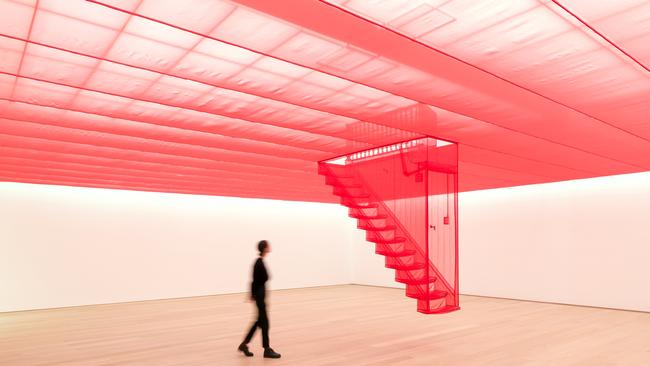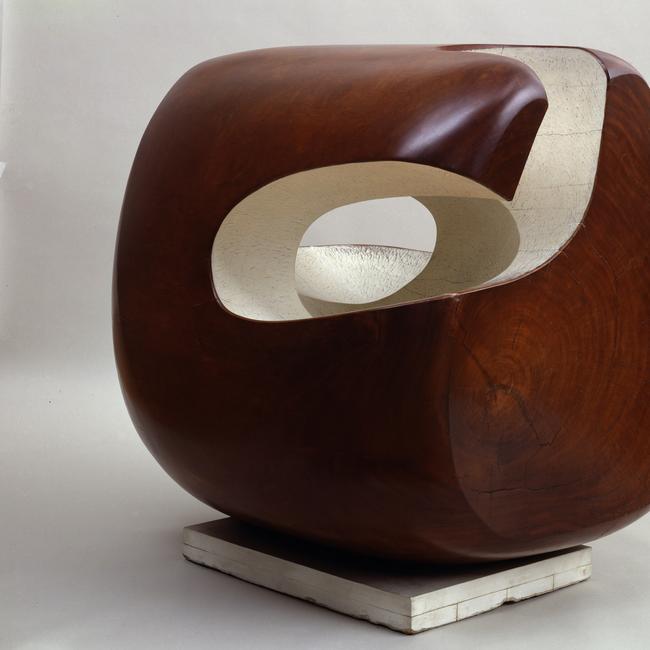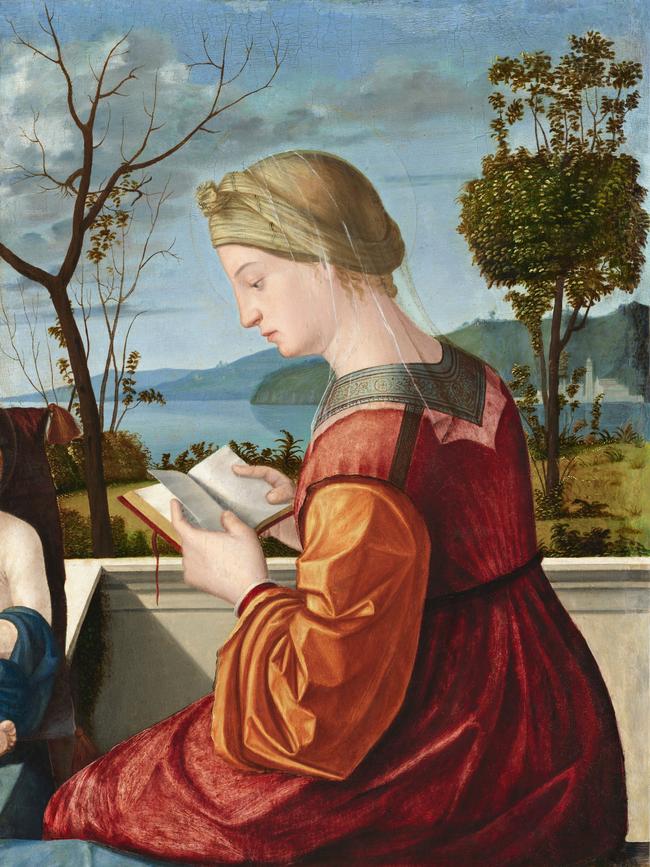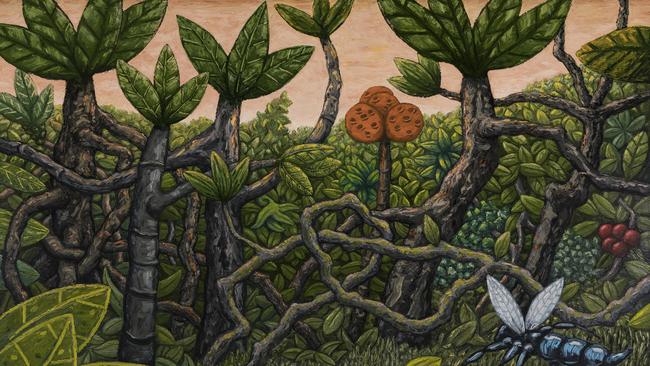The best art shows of summer: from Sydney to London
While there are a few interesting exhibitions to see here this summer, the quality overseas is worth long haul

This has not been a good year for our big galleries and museums – the best and worst of 2022 will be discussed in a separate piece in a fortnight – and I can’t recall a more uninspiring program for the summer season that is about to begin. There are probably four or five exhibitions at most that warrant a special trip, one in Sydney, two in Canberra and a couple more in Melbourne.
Something seems to have gone very wrong with our leading art institutions. Apart from overseas loans and blockbusters, one should expect any serious museum or public gallery to mount at least one substantial exhibition from each of its collecting areas every year; and this is more or less what they once aspired to do. But this of course implies that the central focus of the institution is on developing their collections and building the curatorial expertise to support, document, research and exhibit these collections.

In the last few years, however, our public institutions have become far more concerned with ideology and compliance with the toxic pseudo-politics of identity. They have been competing to assert their commitment to collecting women artists – but without reconsidering the criteria for inclusion in their canon – or scrambling to be the most fulsome in their acknowledgment of Indigenous cultures.
The best exhibition in Australia at the moment is the survey of Cressida Campbell at the National Gallery in Canberra, which was reviewed here two weeks ago. The quality of the work, and the intelligence of its presentation, contrast sadly with the confusion that reigns elsewhere in the gallery, epitomised by one room in which a fine Gandharan statue and a piece of neo-primitive schlock are shown side-by-side with a Tiepolo and a Lucian Freud.
The National Museum of Australia also has a show which I have not yet seen but which should be well worth visiting, Feared and Revered, a collection of work from the British Museum devoted to the fearsome aspects of the feminine in various cultures. The Museum also has a new Natural History gallery which will be discussed here in a couple of weeks.
In Sydney, it is worth seeing the subtle and refined work of the Korean Do Ho Suh at the Museum of Contemporary Art, which will be reviewed early in the new year. There are also a few smaller shows like Kill or Cure at the State Library of NSW, recently discussed here. The Art Gallery of NSW, apart from its new building with its installations, has no really significant exhibition over summer, just a survey of the dull and predictable oeuvre of Daniel Boyd and the even duller Sol LeWitt, who continues to bore us beyond the grave with vacuous decorative projects carried out by assistants.
In Melbourne, the NGV’s main summer exhibition is once again devoted to fashion, and several smaller ones are about forms of design; art is to be found mainly in the permanent collections, but also in a couple of smaller exhibitions, the best of which is of Fred Williams’s early London drawings. There is also a large video work about the destruction of the Amazon rainforest, by Richard Mosse. The Hellenic Museum, meanwhile, has the recent commissions by Bill Henson and Sam Jinks that I reviewed some weeks ago.

The most noteworthy exhibition in Melbourne, however, is the outstanding Barbara Hepworth: In Equilibrium at Heide, which will be reviewed in January. A little further out, at TarraWarra, the survey of Peter Booth should certainly be worth a visit, and it will also be reviewed early in the new year. Other regional museums in Victoria offer a diverse range of exhibitions, including two devoted to Chinese art at Bendigo, one that attempts to shed new light on Australian art at Ballarat, a survey of Mandy Martin at Geelong, and the premiere of an ACMI touring exhibition on video art at Benalla.
Elsewhere in Australia, the Art Gallery of South Australia has Interwoven Journeys, a survey of the treasures of Asian art given to the gallery by Michael Abbott, as well as a couple of contemporary exhibitions that I have not had a chance to see or judge. In Brisbane, Still Life now considers the past and present of an important genre.
Overseas, as usual, both the range and the quality of exhibitions are far higher than in Australia. In London, the British Museum has Hieroglyphs: Unlocking Ancient Egypt, while the National Gallery has Lucian Freud: New Perspectives and Winslow Homer: Force of Nature, the first survey of this important American painter in the UK. Turner on Tour, meanwhile, presents two marine paintings that have been in the Frick Collection in New York for over a century.
The Tate Modern in London has an ambitious survey of the work of Paul Cézanne (80 oil paintings and 40 watercolours as well as sketchbooks and other materials), mounted in collaboration with the Art Institute of Chicago, where the exhibition was shown from May to September this year.
The Tate St Ives, coincidentally, also has an exhibition devoted to Barbara Hepworth, one of the most famous artists resident in the town. The Courtauld has an exhibition on the intriguing Swiss-English artist Henry Fuseli, best known for his painting The Nightmare (1781), today in Detroit.
In Paris, the Louvre has an exhibition of 16th-century Bolognese drawings – this was the city that produced the Carracci at the end of the century – and Things: A History of Still Life. As the Louvre covers a spectrum of material that in London is divided between the National Gallery and the British Museum, it is also presenting The Splendour of Uzbekistan’s oases, an exhibition that reveals a little-known world at the crossroads of Persian and Chinese civilisations. The Musée Guimet, devoted to Oriental art, explores an historically and culturally related area in La Saison Afghane, which will consider both the ancient and contemporary cultures of Afghanistan.

Elsewhere in the city, the Grand Palais has a new branch called the Grand Palais Immersif, which will present Venice revealed using new technologies and museological techniques. The Petit Palais has the first survey of the work of Walter Sickert to be shown in France, co-produced with the Tate Britain, where it was shown from April to September this year.
Among the many things to see in Berlin – including the reopened Carpet Rooms at the Pergamon Museum’s Asian Art Museum, with carpets restored after terrible burn damage in WWII – is Donatello: Inventor of the Renaissance at the Gemaldegalerie. This great artist was the principal model for Michelangelo as a sculptor, and his Saint George (1415-17) was a direct source for Michelangelo’s David (1501-04), especially in the facial features and psychological characterisation. Later in the year, the same museum will present Hugo van der Goes: Between Pain and Bliss, a survey of one of the greatest Flemish painters of the 15th century; the same century that was in Italy the spring of the Renaissance was for the northerners what Johan Huizinga called, in the title of a famous book, The Autumn of the Middle Ages (1919).
In New York, the Metropolitan has what is by all accounts the spectacular The Tudors: Art and Majesty in Renaissance England as well as the very different but equally fascinating Cubism and the Trompe l’Oeil Tradition – indeed the connections proposed by this exhibition are so intuitively plausible that it is surprising they have not been adequately noticed in the past. The Museum of Modern Art has Meret Oppenheim: My Exhibition, a broad survey of the work of an artist almost exclusively known for two works made early in her career – her fur tea-cup (Le Déjeuner en fourrure) and Ma Gouvernante, both made in 1936 when she was 23 years old, and like all her work strongly coloured by a sadomasochistic erotic sensibility.
The National Gallery in Washington finally – because one has to stop somewhere – has a singularly interesting combination of important exhibitions, any of which, alas, puts all of Australia’s museums to shame. The most prominent is Vermeer’s secrets, which has almost a month to run but for which visitors are already having to wait in a virtual queue for their entry time. Sargent and Spain adds another chapter to the broader story of the relation of modern tonal realism with the history and culture of the Iberian Peninsula.
Vittore Carpaccio: Master Storyteller of Renaissance Venice brings us back to the Renaissance and to one of the most charming and engaging of painters that many readers have no doubt encountered in the course of their visits to Venice.
None of these outstanding exhibitions will come to Australia, but some of us may be fortunate enough to visit them overseas, and for others, it is always possible to order the catalogues – of which two of the most intriguing may be those of the Still Life exhibition in Paris and the Cubism and Trompe-l’Oeil in New York.




To join the conversation, please log in. Don't have an account? Register
Join the conversation, you are commenting as Logout